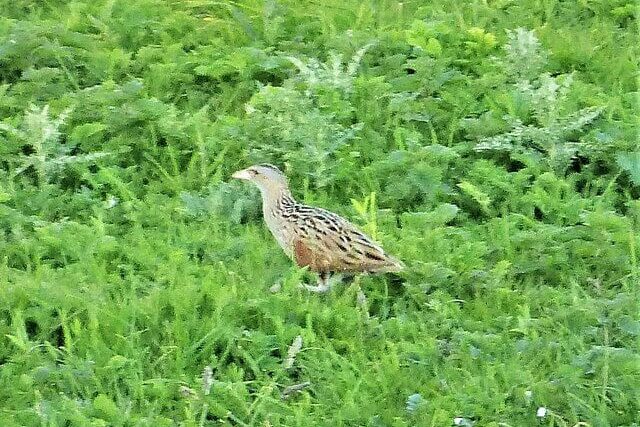
After five years of decline, the number of corncrakes in Scotland has risen, bringing optimism for the survival of this elusive bird in Britain.
The count of calling males increased to 870 this summer, up from a low of 828 in 2022 and the highest since 2019.
The red-listed corncrake experienced a brief population surge in the early 21st century on the islands of north-west Scotland, peaking at 1,289 calling males in 2014 before facing a rapid decline.
The bird’s habitat has been impacted by changes in land use, including cutting pastures for silage and the loss of scrubby cover.
To counter this, the RSPB Scotland’s Corncrake Calling partnership project collaborates with farmers to enhance corncrake habitats. The project focuses on creating vegetation corridors with irises, nettles, and cow parsley, providing hiding spots for the birds and encouraging later hay-cutting and mowing dates to protect ground-nesting chicks.
Anne McCall, director of RSPB Scotland, sees the rise to 870 calling males as a promising turning point for the corncrake.
“These results are a significant moment for efforts to save corncrakes in Scotland and a real tribute to the enormous collective effort of farmers, crofters and local communities to help these birds through Corncrake Calling,” she said. “It shows that targeting the quality and quantity of corncrake-friendly habitat and land management yields results.”
The islands of Coll, Lewis, and Tiree, where substantial conservation efforts supported by the National Lottery Heritage Fund have been implemented, have witnessed notable increases in the number of calling males this year. Coll has experienced an increase from 47 calling males in 2022 to 68 in 2023, Lewis has seen a rise from 74 to 88, and Tiree has observed an increase from 273 to 293.
——————————————————————————
At Natural World Fund, we are passionate about stopping the decline in our wildlife.
The decline in our wildlife is shocking and frightening. Without much more support, many of the animals we know and love will continue in their decline towards extinction.
When you help to restore a patch of degraded land through rewilding to forests, meadows, or wetlands, you have a massive impact on the biodiversity at a local level. You give animals a home and food that they otherwise would not have had, and it has a positive snowball effect on the food chain.
We are convinced that this is much better for the UK than growing lots of fast-growing coniferous trees, solely to remove carbon, that don’t actually help our animals to thrive.
This is why we stand for restoring nature in the UK through responsible rewilding. For us, it is the right thing to do. Let’s do what’s right for nature!
Donate today at https://naturalworldfund.com/ and join in the solution!

